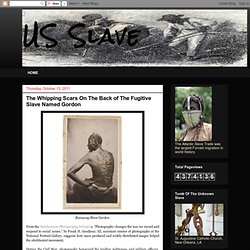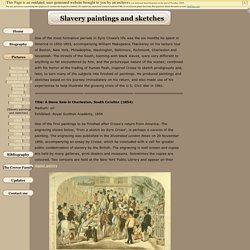

The Whipping Scars On The Back of The Fugitive Slave Named Gordon. Runaway Slave Gordon.

From the Smithsonian Photography Initiative, "Photography changes the way we record and respond to social issues," by Frank H. Goodyear, III, assistant curator of photographs at the National Portrait Gallery, suggests how mass produced and widely distributed images helped the abolitionist movement. During the Civil War, photography heroicized the leading politicians and military officers, memorialized sites where the war was waged, and—remarkable for the time—revealed how violent and deadly the battles between Union and Confederate forces actually were.
It also played an influential role in broadening the national debate about slavery. African American History Sites. Paintings and Sketches relating to slavery, by Eyre Crowe. One of the most formative periods in Eyre Crowe's life was the six months he spent in America in 1852-1853, accompanying William Makepeace Thackeray on his lecture tour of Boston, New York, Philadelphia, Washington, Baltimore, Richmond, Charleston and Savannah.

The streets of the South, teeming with black slaves, were very different to anything so far encountered by him, and the picturesque nature of the scenes, combined with his horror at the trading of human flesh, inspired Crowe to sketch prodigiously and, later, to turn many of the subjects into finished oil paintings. He produced paintings and sketches based on his journey immediately on his return, and also made use of his experiences to help illustrate the growing crisis of the U.S.